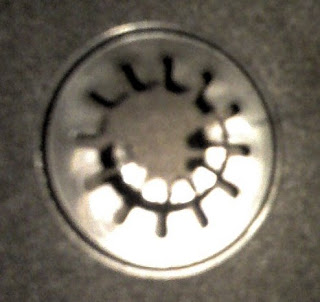 Image via Wikipedia
Image via Wikipedia
I regularly fill the water container for our two cats. The design is quite smart in that it provides a constantly replenished supply, at least whilst there is water left. It is little more than an inverted plastic container in a dish, and atmospheric pressure (countering the partial vacuum in the container) stops the water overflowing.

Filling the container, clipping on the dish and inverting it over a sink gives a result which is less than perfect - the water from the container fills the dish (and some of it also tends to spill into the sink during the inverting process) and so the water container is about half empty. I've tried filling the sink and trying to fill the container under water, but the sink isn't big enough to do it properly, and this wastes lots of water.

Instead, I turn the assembled container and dish through 90 degrees, and dribbles the water into the container by letting the water stick to the dish. The container quickly fills up, and gradually bringing it back to the normal position fills the dish.

The end result is a container that is very nearly completely filled with water, and a very neat use for the stickiness of water!

![Reblog this post [with Zemanta]](http://img.zemanta.com/reblog_e.png?x-id=a790a7a3-e1db-4602-b76c-fbd71f33dcba)



![Reblog this post [with Zemanta]](http://img.zemanta.com/reblog_e.png?x-id=0dbc7f65-ce78-497a-a9b7-fd427687d96e)



